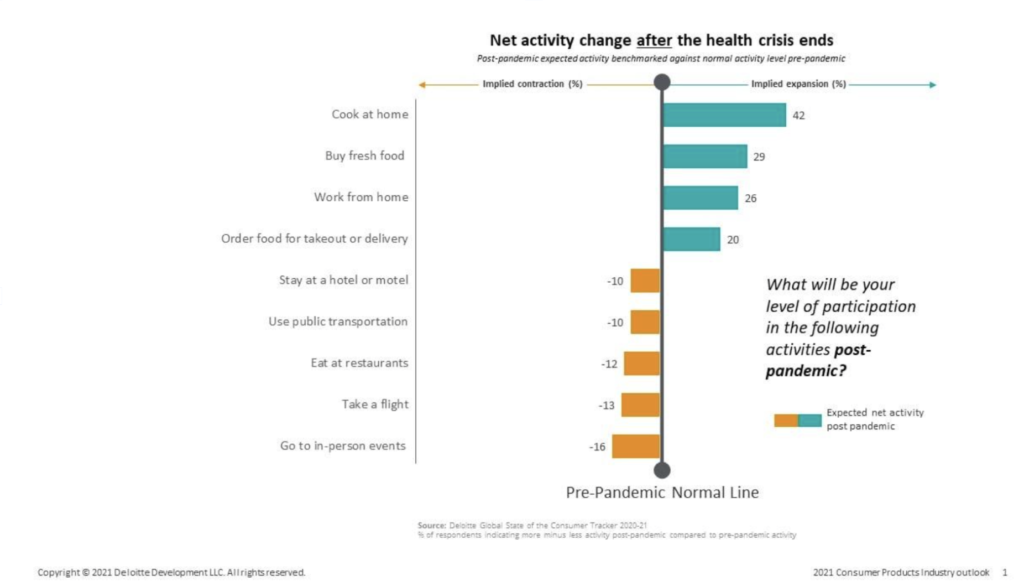232Views

Run up flagpole: What happen after Covid
Restaurants have had to reinvent themselves, demonstrating how agility is essential to their existence. Despite the fact that the vast majority of restaurants have recovered and that traffic patterns are improving, the industry still has a lot of obstacles to overcome before it can entirely recover. They had to quickly change their focus to off-premises orders, modify their menus and workforce, and enlist the help of the neighbourhood.

Food service companies will be forced to open smaller storefronts as in-store eating declines, which will be aggravated by cloud kitchens and an increase in online-to-offline takeout.
As they develop their value offer and create their own cloud kitchen network, aggregators will begin to rule the food service sector.
A Bifurcated Economy – As consumer budgets become more constrained, value and private label products will become more popular. Premium goods supported by businesses with a purpose will grow at the same time.
CPG mood amplifications – This past year, euphoric and nootropic beverages, a new category of useful non-alcohol beverages, experienced tremendous growth. While nootropic beverages are intended to increase brain clarity and reduce stress, euphoric beverages are designed to make you feel ecstatic after consuming them.

Restaurants can get back to business, speed up transactions, and increase order accuracy by utilising the appropriate technologies.
A smart POS system, tableside ordering and electronic menu technologies, mobile ordering technology, contactless payment options, possibly even self-order kiosks, and guest interaction apps are all part of the current restaurant tech stack.
Instagram, ratings, comments, and food bloggers
New YouTube chefs and home cooks
Home-based freelancer chef
Don’t forget about inventory management, menu management, and tools for staff scheduling.
Menu engineering: Restaurant supply chains have been disrupted by COVID-19, which has increased the cost of raw materials and made it challenging for some establishments to obtain their usual ingredients. You must comprehend the psychology underlying a menu’s presentation, promotion, pricing, and ordering in order to streamline it.
Chains and franchising will receive a larger share of the market: Today, franchise sales to soar when combined with excellent real estate, inexpensive mortgage rates, and sizable numbers of unemployed restaurant personnel.
The footprint of real estate will decrease: The rise of virtual brands is not expected to slow down anytime soon given the quick expansion of delivery and takeaway. Restaurants may reconsider their real-estate footprints as internet ordering grows in popularity. Restaurants may reduce the amount of space available for dine-in customers while expanding the cooking, take-out, and pick-up sections in order to accommodate greater off-premises sales.

To succeed in the new environment, food service organisations will need to implement a fundamental business reset and strategically reinvest.
As we move through the first half of 2022, we can already see that consumers are continuing to prioritise indulgence, premiumization, health and wellness, and taste discovery.


